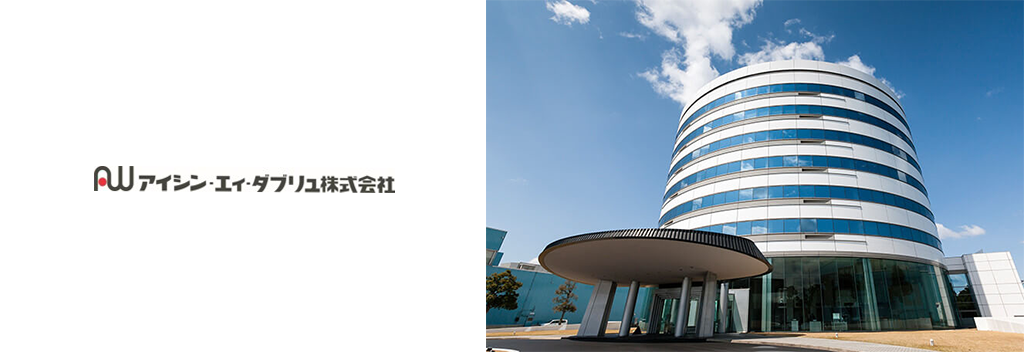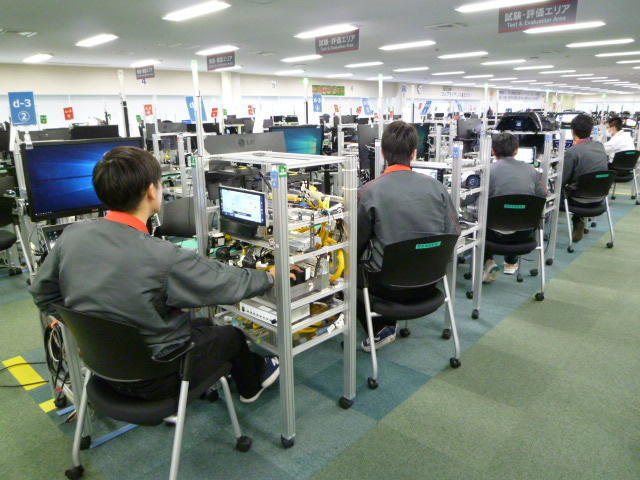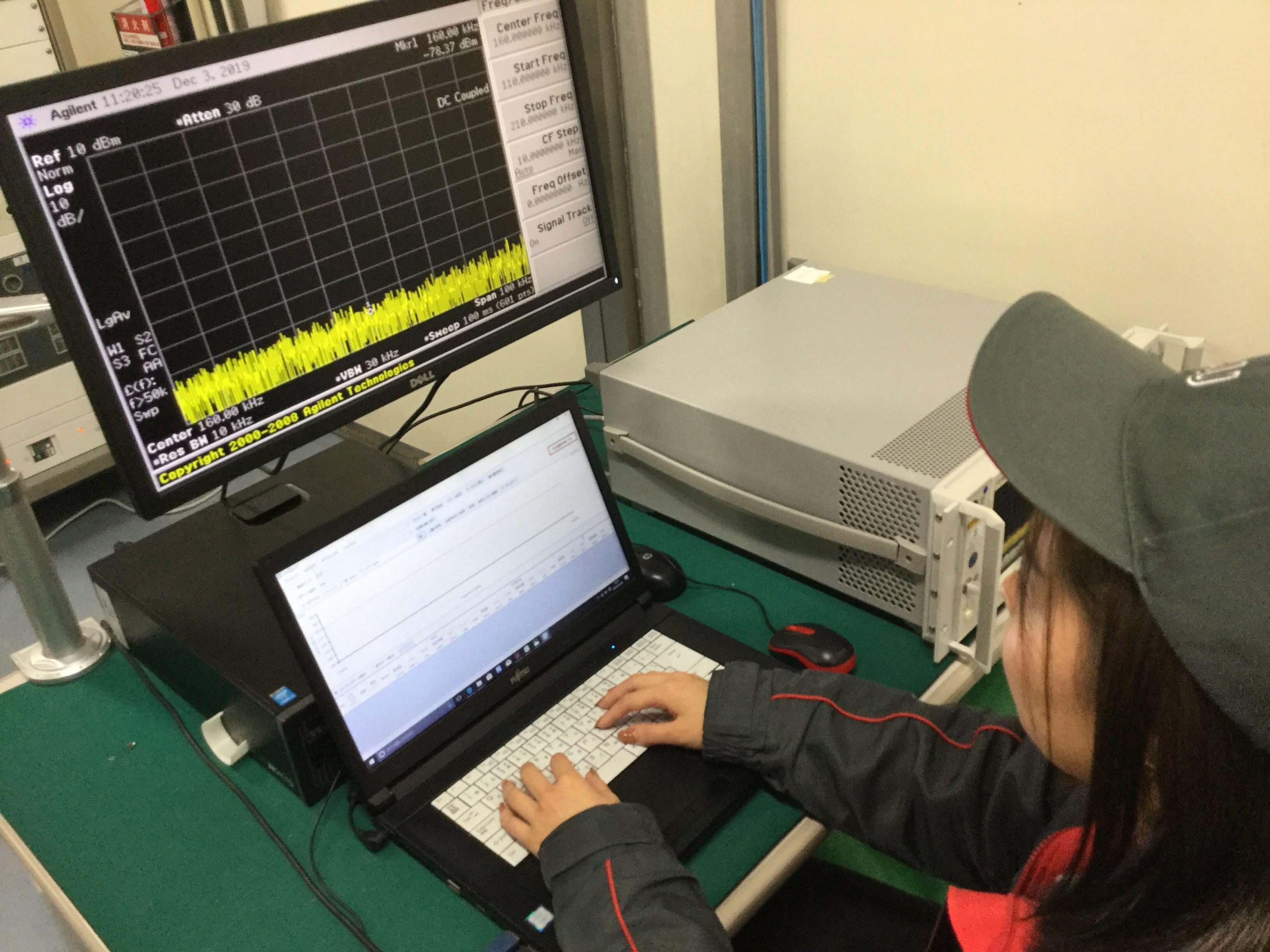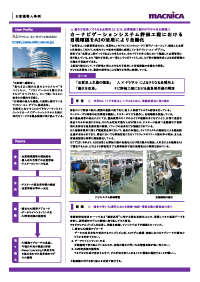
AI utilization case of Aisin AW Co., Ltd.
Automate visual checks in the car navigation system evaluation process using AI
Aisin AW Co., Ltd. is automating routine work by actively utilizing AI, IoT, etc., from the perspective of thorough quality supremacy and work style reform.
As part of the above efforts, we have been promoting the automation of the navigation evaluation process using AI since 2018.
In order to complement human visual confirmation with AI, we are developing a high-precision AI that can detect anomalies in any evaluation item.
USER PROFILE
■Corporate information: Aisin AW Co., Ltd.
■ Business content:
"Impress your customers!"
I want to create a car that can be driven at will, like a horse. We want to create a car that moves the driver's heart.
Based on this idea, Aisin AW Co., Ltd. aims to harmonize with society and continues to take on the challenge of creating new excitement for customers. We are working on the development of products that lead the times, centering on transmissions and car navigation systems that are indispensable to automobiles.
summary
background
・Short delivery of quality assurance period
・Personal visual quality evaluation
・Passing on know-how of testers
Purpose
・Reduction of high-load work of the tester
・Consistent quality judgment standards
Task
・ Appropriate AI development approach
・Lack of data scientists
・Explanability of AI judgment grounds
Attempt
・Review AI development approach
・Investigation and evaluation of visualization methods
・Development of anomaly detection model combining deep learning and conventional methods
background
Working to improve operational efficiency in order to continue creating the world's No. 1 navigation system
The company's navigation evaluation process is the final process of development, and the system is evaluated by dozens of people.
A usage environment equivalent to that of end-users is constructed, and testers operate the navigation system and carry out visual checks.
Particularly in the detection of drawing anomalies, extremely advanced detection skills are required due to the small size and the large number of types of drawing anomalies.
As a result, the number of human resources who can handle this is limited, and there are issues such as the elimination of long hours of physically demanding work such as two shifts of testers day and night, and the passing on of know-how.
In addition, not only in the automobile industry but also in the manufacturing industry as a whole, there is a demand for short-term production due to the diversification of products and shortening of the life cycle. It also has a very short delivery time.
Therefore, in 2018, we started efforts to automate the evaluation process using AI.
In order to complement human visual confirmation with AI, we are developing a high-precision AI that can detect anomalies in any evaluation item.

Navigation system evaluation environment
Task
High degree of difficulty in development, verification, and information gathering in the fast-progressing AI industry
The company has been working to develop an anomaly detection model by analyzing accumulated image data in order to automate the detection of "drawing anomalies", which is one of the reliability evaluation items.
While using various algorithms and conducting verification, the following issues arose.
- Appropriate AI development approach
It is not possible to judge whether the approach to AI model construction and verification, such as how to use data and the algorithms to be used, is appropriate. - Shortage of data scientists
Although we are working with a small number of elites, we cannot keep up with information collection due to the rapid evolution of technology. - Explainability of AI decision basis
It is difficult to choose which method is the best to adopt among various methods.
The next section introduces efforts to address the above issues.
Attempt
Exploring realistic solutions with optimal approaches and methods
Based on the CNN algorithm, the company is working on in-house development and verification of multiple highly accurate anomaly detection models.
Although high-precision models have already been built with advanced technical capabilities, there are differences in the performance of each developed model, and verification takes time.
We were also investigating the "explanability of AI judgment grounds," which is necessary for the active use of artificial intelligence in the manufacturing industry. was struggling.
Therefore, we partnered with Macnica to accelerate our efforts in "accuracy verification" and "AI visualization method verification."
We are currently developing a model that can be applied in practice.
Macnica 's support content
1. Rethinking AI development approaches
First, we started the survey from the reliability of the data that is the premise.
Duplicate data was discovered when analyzing the normal and abnormal data of learning and testing. Due to the possibility of over-learning due to duplicated data and accurate generalization verification, the data was re-examined.
We built the AI model again and verified it.
2. Investigation and evaluation of visualization methods
At the AI Research & Innovation Hub, which investigates the latest AI trends and papers, we investigated cutting-edge solutions that visualize what DNN (Deep Neural Network) has learned.
The need for visualization methods is increasing in various industries, so there are an extremely large number of papers, and depending on the method, there are some methods that cannot correctly present the basis for judgment, making it difficult to select an appropriate method. there is
This time, the AI Research & Innovation Hub, which surveys 300 papers annually and regularly participates in international conferences, proceeded with the examination, and conducted verification using the method "SHAP", which is considered to be suitable for this project.
Many of the codes published in cutting-edge papers use Keras/Tensorflow, so in order to make it easier to adopt the method, we also rewrote the Chainer and verified the explainability by SHAP. We evaluated the applicability to practice.
3. Model construction combining deep learning and conventional methods
In addition to building a model using deep learning, we also verified anomaly detection using the open source image processing library "Open CV".
The background is that by using the conventional method of judgment by numerical calculation together with the deep learning model, it becomes easier to ensure the explainability, and it is expected that it will produce merits in practical application.
We are working on further improving the accuracy of the Deep Learning model.
from now on
目指しているのは、人×デジタルによるさらなる品質向上
Through this effort, we have specified a deep learning model verification and visualization method, and at the same time, have constructed a model using the conventional method.
In the future, in addition to drawing anomalies, we are considering expanding the scope to include characters and voices and working on automatization.
In anticipation of the future in which business processes are digitized, we will promote further quality improvement and work style reform through the coexistence and collaboration of people and digital.

Speech waveform analysis
*Information and company names in the text are as of December 2019.
At Macnica, in order to solve the problems faced by companies, researchers close to the field provide knowledge that combines the most appropriate AI technology.
Please see below for details on AI Research & Innovation Hub (ARIH).
